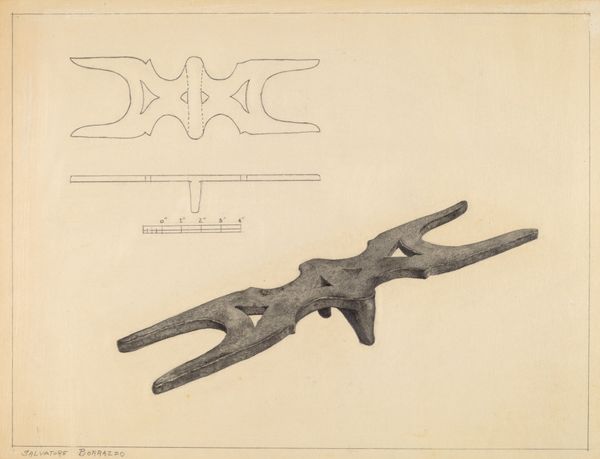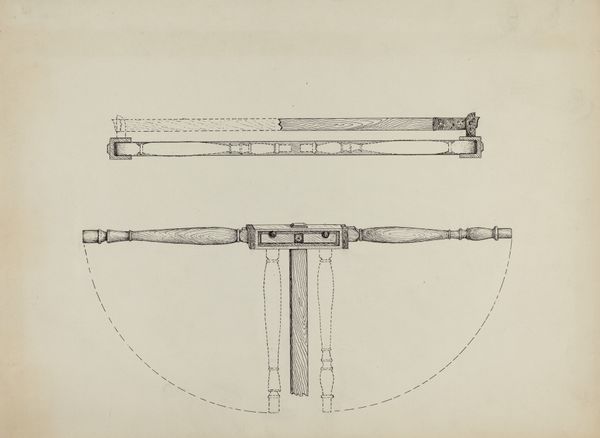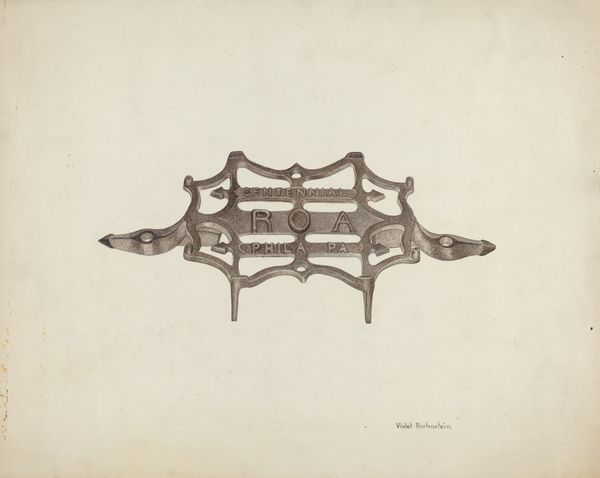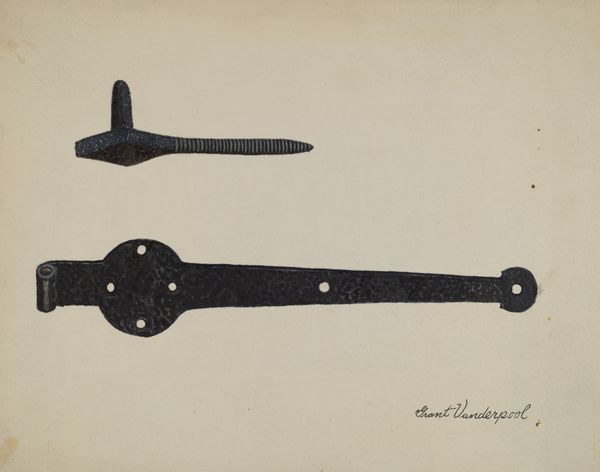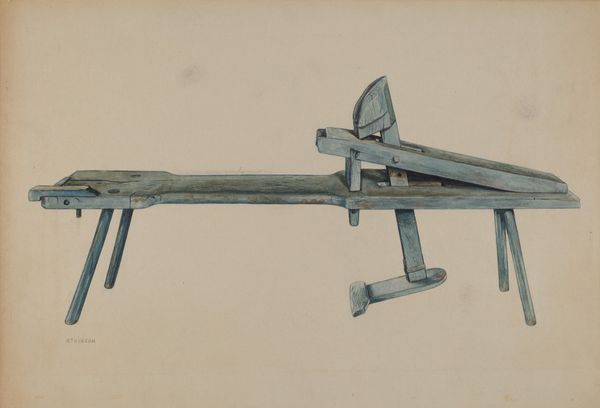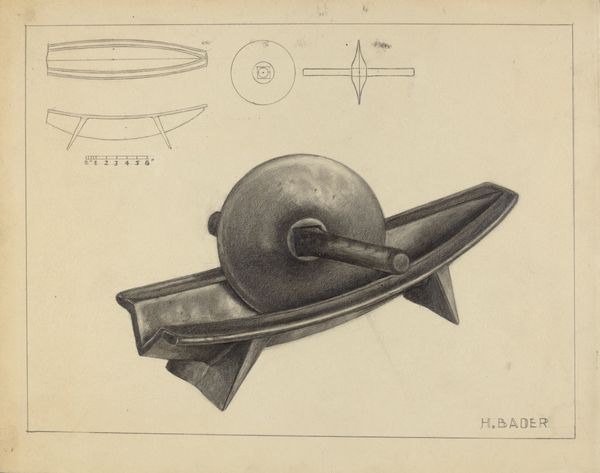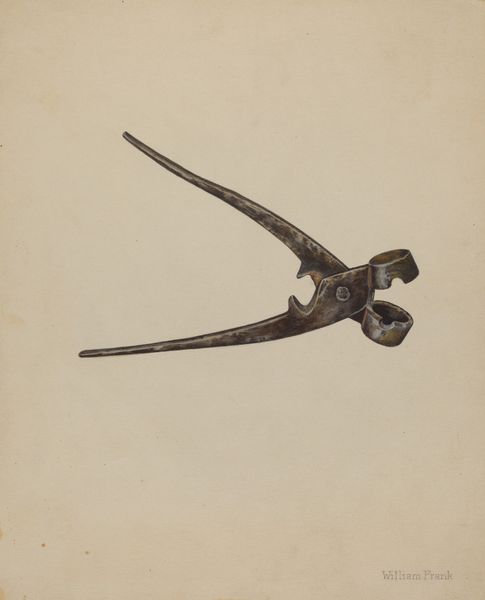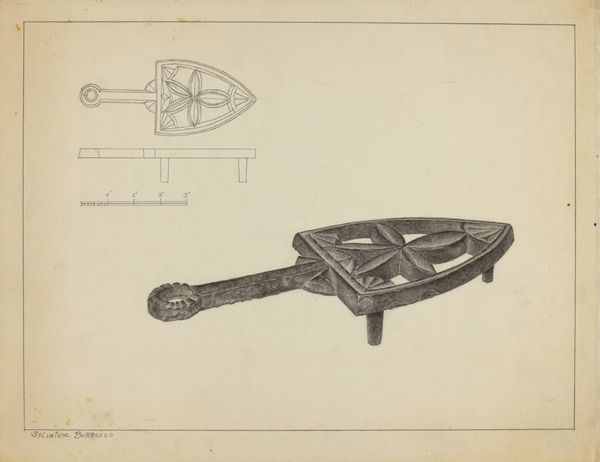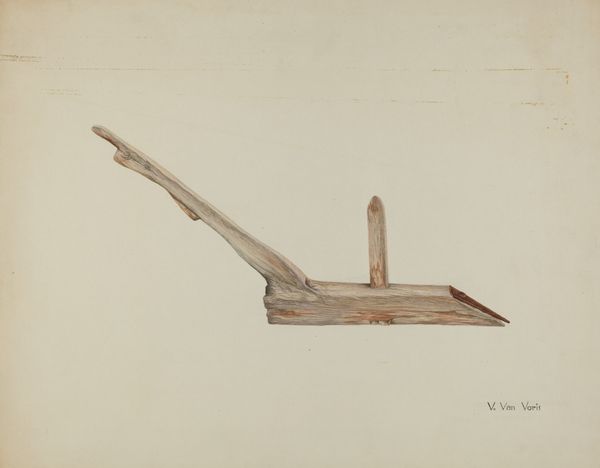
drawing, pencil, graphite
#
drawing
#
charcoal drawing
#
pencil drawing
#
pencil
#
graphite
#
charcoal
#
graphite
#
realism
Dimensions: overall: 27 x 37.8 cm (10 5/8 x 14 7/8 in.)
Copyright: National Gallery of Art: CC0 1.0
Editor: This is Majel G. Claflin's "Bullet Mold," a drawing created around 1937 using graphite, pencil, and charcoal. It's stark and utilitarian, almost cold in its precision. What statements do you think this artist makes when focusing on weaponry tools rather than humans? Curator: It's critical to acknowledge how representations of weaponry, especially during times of conflict, can both reflect and perpetuate dominant power structures. Think about the 1930s: globally, there were anxieties about war and escalating nationalisms. How does depicting this tool, devoid of immediate context, actually heighten those tensions? Claflin forces us to confront the industrialization of violence. Editor: That’s a perspective I hadn't considered. It’s like showing the machine rather than the act, almost desensitizing the viewer through stark realism. Curator: Precisely. Realism, here, isn't just about accurate depiction, it's a strategic choice. It removes any romanticism, focusing instead on the mechanics. It pushes us to analyze not just the object, but what the object produces, and how that production then influences society. What assumptions are challenged when a female artist during this period focuses on such a subject? Editor: It disrupts expectations, right? We tend to associate women artists with more domestic or traditionally feminine subjects. A woman portraying the tools of war raises questions about women's roles in conflict, perhaps even implicating them within its structure. Curator: Exactly! By choosing this subject matter, Claflin invites us to challenge assumptions around gender, power, and the systems of violence embedded within everyday objects. How interesting is it to reveal and discuss these potential dynamics? Editor: I hadn't truly considered it, but now I realize that it's impossible to separate artistic expression from socio-political awareness. Thanks for expanding the dimensions of interpreting art! Curator: And thank you for engaging in such necessary discussions, it truly adds depth to this viewing.
Comments
No comments
Be the first to comment and join the conversation on the ultimate creative platform.
